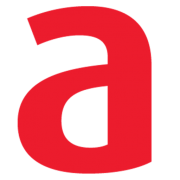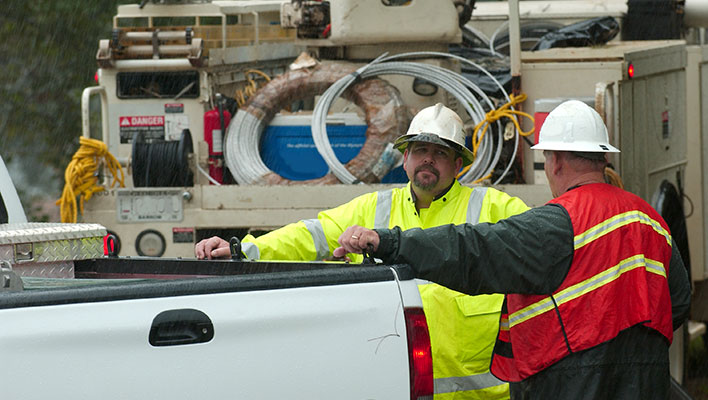Utility field work is hazardous. Power lineman is among the top ten most dangerous jobs in the United States. Each year, dozens die, and thousands are injured. Several factors contribute to this result. Sometimes not enough staff deployed on a job. There may be inadequate training and supervision. Crews may fail to follow safety guidelines. And even if the worker is safe, accidents occur. This leads to incident reports, OSHA penalties and fines, and reputation damage. Anything companies can do to protect their workers is important. Especially if those actions reduce the number of fatalities.
Enter mobile workforce management software, such as ARCOS’s Mobile Workbench, provides a variety of ways to keep field workers safe on the job. It allows increased visibility to ensure the company’s – and OSHA’s – safety procedures are being followed. It provides a handy way to transfer documentation and additional information in real-time. It allows field workers to report in more regularly. It keeps management appraised of how an emergency response is unfolding. It helps the utility’s actions remain fluid and responsive, even during volatile and rapidly changing conditions.
Mobile Workbench is a powerful system and communications tool. It allows you to manage both work orders and people in the same system. It integrates with your legacy processes so everything is working together in a single place.
Field Visibility Lets You Adjust Your Response in Real-Time
In the past, when a field worker was sent out to handle a work order, the back office had little idea what was going on until the employee reported back the results of their manual inspection. The office had to wait for a phone call or a filed report, after the fact. If something happened, supervisors may not know until minutes or even hours later.
With mobile workforce management software, every aspect of the work can be documented in real-time. If something goes wrong or an employee doesn’t report the next step in the process, the office knows almost immediately. Conditions on the ground can change in an instant. Reporting it in the app allows supervisors to adjust activities on the fly. Those changes can be communicated back to the field instantly. This provides the information necessary to deal with the unexpected, including safety hazards.
The smartphone app helps managers assure that all appropriate safety guidelines are being followed in incident management and response. Processes can be monitored at every stage. Guidance can be asked for and given quickly. Sometimes additional issues will be found while completing a ticket, and further action or resources are needed. In these cases, the employee doesn’t have to hunt for paper manuals or stop work due to lack of training. They can get help and new instructions right away.
This is especially important when resources are stretched thin. With an increase in weather events, companies may not be able to send as large a crew as they’d like to. Dealing with widely varying scenarios requires different skill sets. Crews may not know exactly which skills are necessary until they get to the scene. With a mobile app, if the crew on the ground doesn’t know how to handle something, the office can provide an expert to walk them through. Or they can send blueprints or manuals that give much needed information. Having this real-time connection to people, documents, and images is like having an extra teammate on the crew.
Keeping Crews Safe on the Road
Field workers spend much of their time driving so they’re at higher risk for auto accidents. Worse, these crews are often driving into hazardous conditions. This can lead to workplace fatalities. Many of these are avoidable.
During an emergency, vehicles may need to be rerouted. That’s easy to do on a workforce mobility app. The office can send field crews an updated route or instructions. They can direct them around hazards. They can send them to assist another crew that needs help. They can adjust quickly when conditions on the ground change due to an escalating emergency.
Workforce mobility apps also let the office monitor the crews as they drive. They can see when the vehicle stops unexpectedly, and for how long. They can make sure their vehicles are taking the prescribed routes. They can monitor speeds and driving habits. This alerts them if retraining is necessary, or if a different driver should be assigned to the crew. It provides another level of oversight for management. They can ensure crews are abiding by safety procedures and, if not, they can take corrective action more quickly.
Saving Money Through Safe Practices
No one wants to think about a field worker not making it home. With the increased oversight and communication a mobile app can provide, employees are more likely to end their shift intact. This is beneficial to themselves, their loved ones, and the utility they work for.
Utility work order management and damage assessment apps like ARCOS’s Mobile Workbench make resource management more efficient. Utilities can ensure procedures are done right and safely the first time. Thus, the expense of sending additional resources out to respond is avoided. Those with specialized skills can guide the crew on the scene instead of traveling themselves. Giving back- office visibility into the field lets them manage all aspects of the operation. They can ensure crews aren’t wasting time and money.
When safety procedures are followed, OSHA fines and insurance payouts for deaths and injuries are reduced. Besides the human loss, it also costs the company a lot of money as they seek to do right by the team member and their family. Not to mention, the utility must send additional crews to deal with the original incident plus the new situation. They also may have to adjust their workforce to replace the crew member.
We Can Help
ARCOS’s Mobile Workbench can help streamline your operations. It can give you the visibility you need for efficient workforce management and to ensure procedures are followed. It is a robust app for mobile devices that provides back-and-forth communication and document transmission, allowing flexibility in your response. It gives instructions on the ground to keep crews safe. It puts everything a field crew member needs in their pocket while also looking out for their safety. These features keep operations running smoothly while protecting employees and the business.
Contact us for a demo of Mobile Workbench to see how you can use it to make your utility operations more safe and efficient.




